SOS Brutalism—Save the Concrete Monsters!
International Heavyweight Architectural Exhibition Arrives in Taiwan
For its Asian Premiere at the Jut Art Museum on July 4th
Jut Art Museum and Deutsches Architekturmuseum collaborate to comb through post-war architecture and its temporal context.
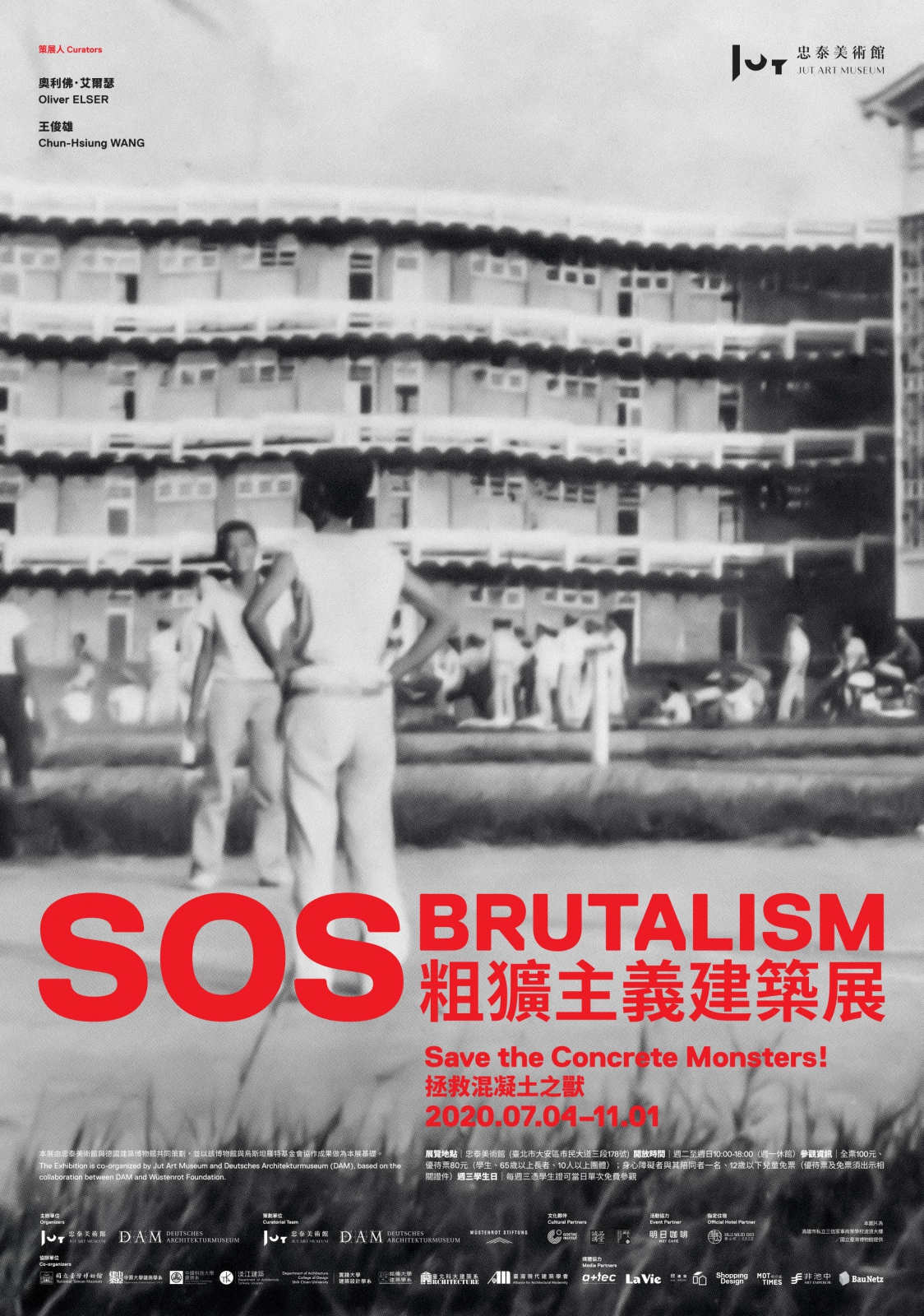
Architecture has the ability not only to reflect the urban microcosmos, but also to represent the temporality of a society. In other words, an architectural history is also the history of society.
Jut Art Museum launched the latest international heavyweight architectural exhibition, SOS Brutalism—Save the Concrete Monsters! on July 4th. The exhibition, jointly curated by Jut Art Museum and the Deutsches Architekturmuseum (DAM, German Architecture Museum), is based on an exhibition of the same name unveiled in Germany in 2017, which was the first international exhibition that surveyed global Brutalist architecture from the 1950s and 1970s, and that proposed initiatives for preservation. For the Asian premiere of the exhibition to be held in Taipei, six case-studies of Brutalist architecture in Taiwan have been added to strengthen the Taiwan perspective and discourse. The exhibition will showcase and explore the mutual relevance of over 100 Brutalist case studies from 13 regions around the world through five topics. The exhibition will run from July 4th until November 1st.
This exhibition marks another architectural exhibition that examines movements in architecture from within a larger temporal context organized by Jut Foundation for Arts and Architecture, following the success of the 2013 exhibition Metabolism: The City of the Future.
“These two exhibitions are significant not merely as retrospectives of architectural history, but because they attempt to contemplate the diversity from beyond the mainstream by introducing avant-garde architectural movements that influenced the world, and by focusing on the inseparable relationships between architecture, society, and the era,” said Jut Foundation Executive Director, Aaron Y. L. Lee. “In light of the current pandemic, we hope to reflect on the impact of globalized development to-date, and to look back on history as we re-contemplate future strategies for breakthrough.”
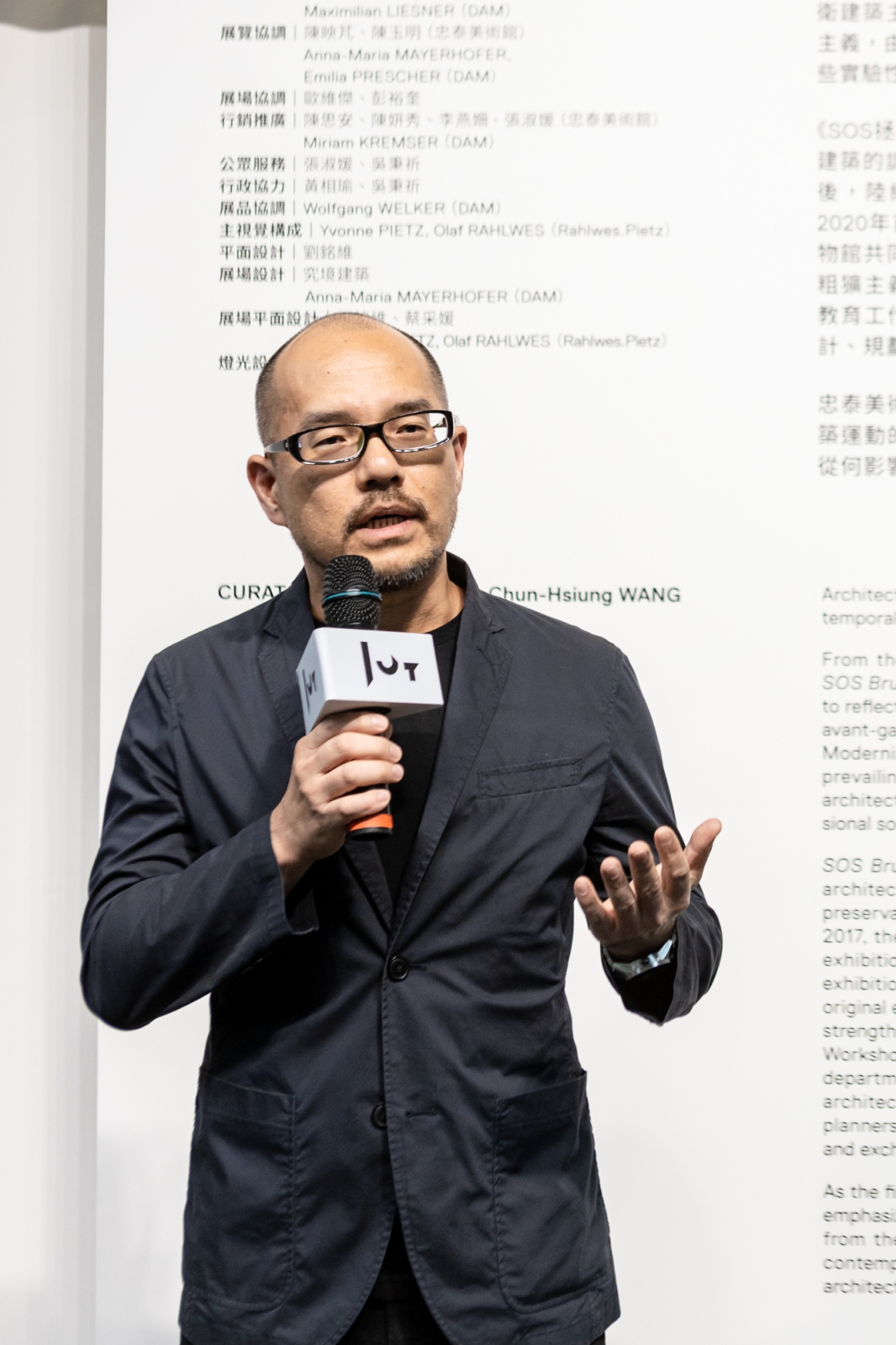
The unstoppable postwar rise of concrete monsters: Brutalist architecture
First exhibited at the Deutsches Architekturmuseum (DAM, German Architecture Museum) in 2017, SOS Brutalism—Save the Concrete Monsters! was the first global survey of Brutalist architecture from the 1950s to the 1970s that launched a simultaneous campaign to rescue architecture from this era through the “#SOSBrutalism” movement. The exhibition subsequently toured cities including Vienna, Bochum, and Aalen. In 2020, the exhibition makes its first foray out of Europe in a collaborative effort with Jut Art Museum. The exhibition’s Asian premiere in Taipei will be jointly curated by Professor Chun-Hsiung Wang, Dean of the Department of Architecture at Shih Chien University, and the curator of the original exhibition, Mr. Oliver Elser.
The term Brutalism originates from the word “béton brut”— the French term for exposed concrete. Brutalism first rose to prominence in 1950s Britain, with master architect Le Corbusier pioneering this architectural style. Subsequently, under the influences of globalization, works in this style sprang up in every corner of the world. The rawness and bare construction are characteristic of the rich expressive style of Brutalist architecture. It is also a manifestation of the anticipation for renewal, the societal upheaval, and the rise of an experimental spirit in the period following the Second World War. However, with the changing times, this type of architecture is often ridiculed as grotesque or technologically outdated by today’s societal standards, and now encounters a crisis of being demolished, which has catalyzed concern for related issues and the birth of this exhibition.
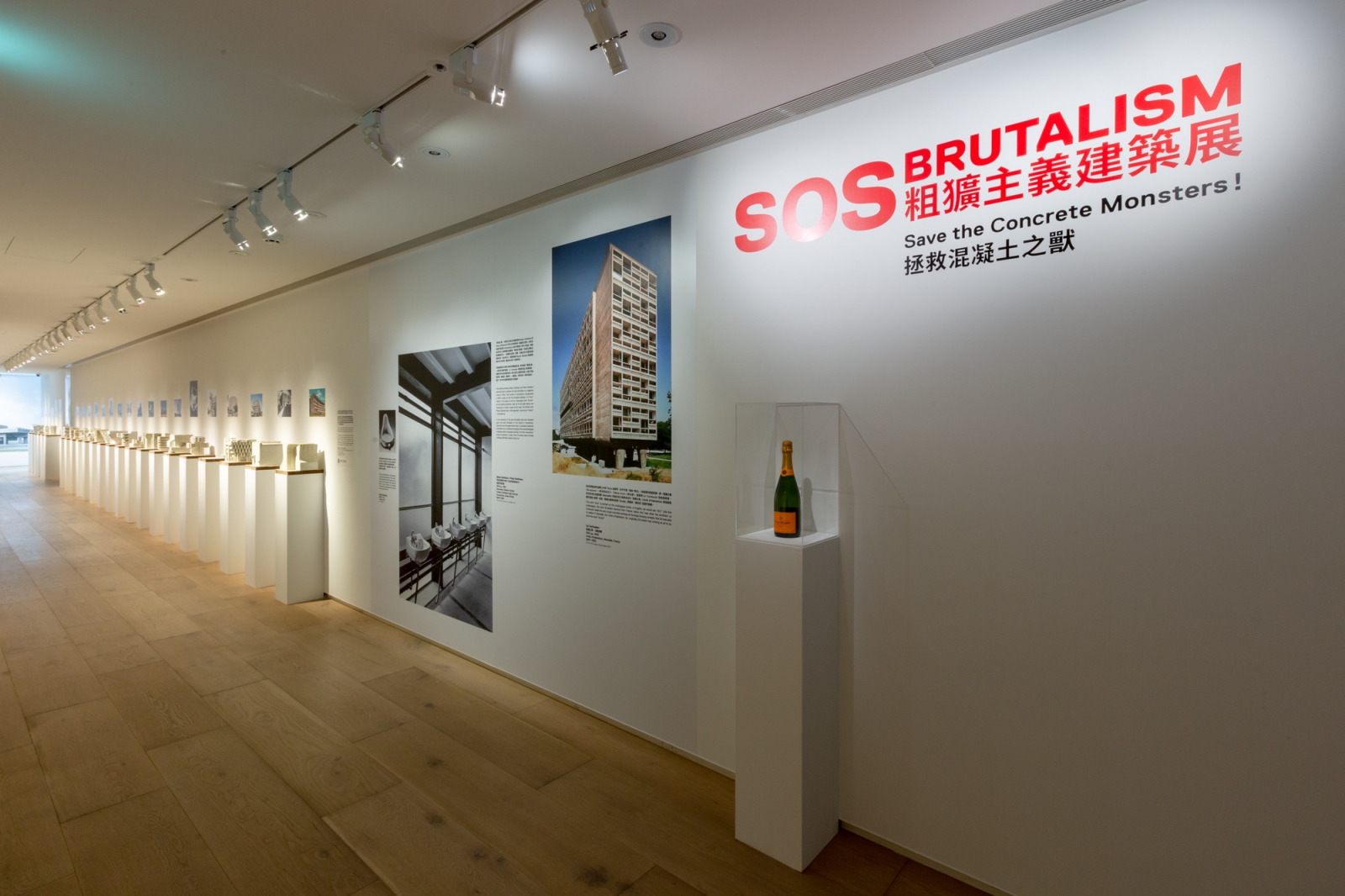
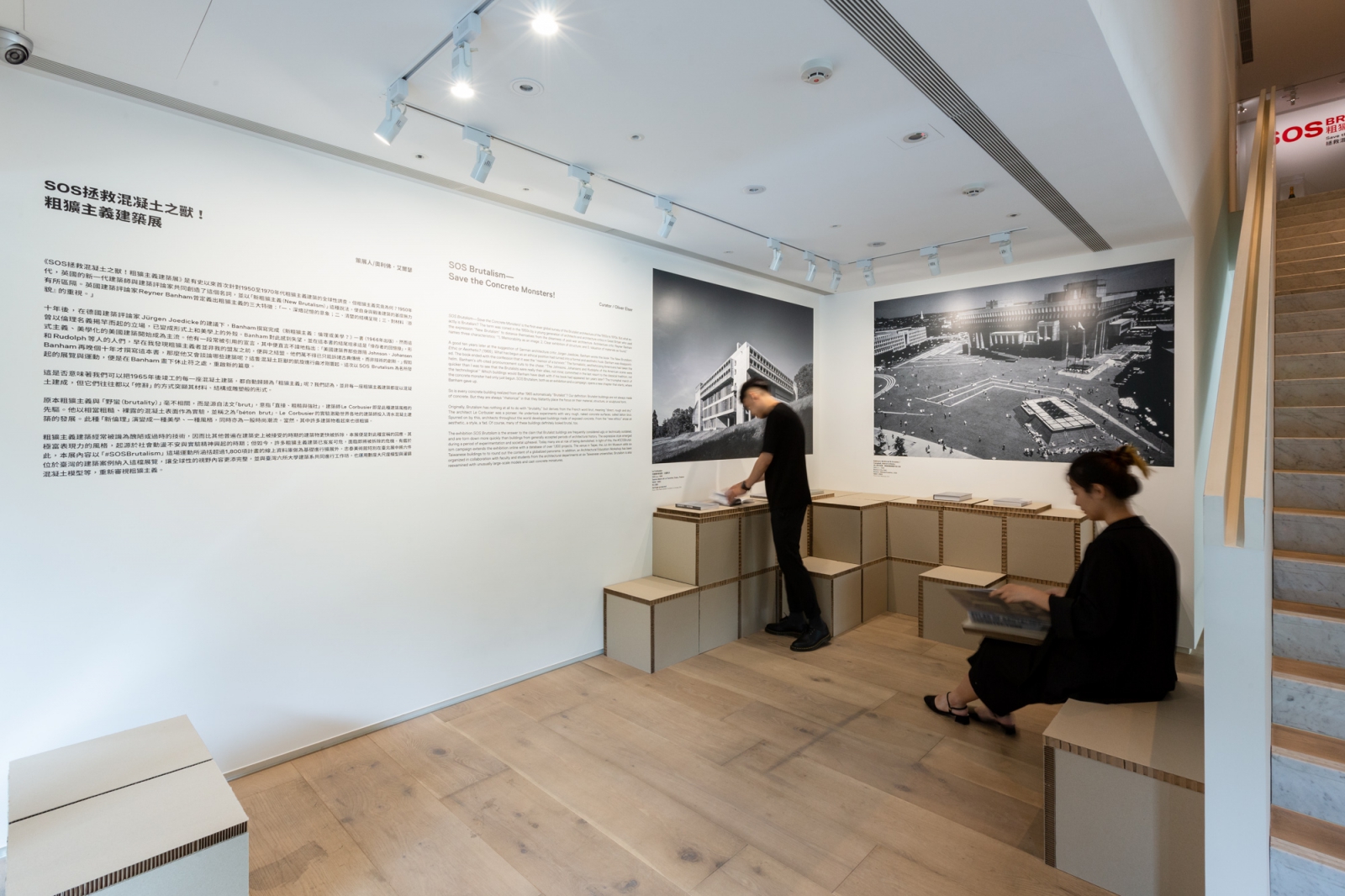
Due to restrictions around the pandemic, German curator Oliver Elser has been unable to attend the press conference in person, but sends his regards on video: “It makes me more than happy, that finally the exhibition: SOS Brutalism—Save the Concrete Monsters! has is now arrived in Taipei at the Jut Art Museum! The period of Brutalist architectural history was an era of new beginnings in the majority of countries. It was an era of experiments; some successful, some failed. Whatever happened, good or bad, to destroy these buildings is not sustainable. We should think about strategies of preservation, of bringing new life into the old concrete. This is a new way to think about architectural heritage we should all consider for the future.”
A look back on the spirit of an era, a half-century hence: 13 regions, five themes, and over 100 architectural case-studies
Architecture is a vehicle for human life, and a reflection of social characteristics and regional color. Hence, this exhibition explores a turbulent society of a half century ago from the perspective of 13 global regions and five topics.
The exploration begins from 13 regions encompassing North America, Latin America, Africa, South Asia and Southeast Asia, East Asia, Russia, Central Asia and Caucasus, Eastern Europe, Western Europe, Middle East, Great Britain, Oceania, Germany, and Taiwan, where the silhouettes of the concrete monsters of Brutalism can be seen. They amalgamate the customs and flavors of each region, localizing Brutalism to develop distinctive postures and forms. In addition to large-scale models of the Art & Architecture Building at Yale University, the Boston City Hall, the Dr. Minezaki House (Dragon Fort) and the Faculty of Architecture and Urbanism at the University of São Paulo (FAU-USP), this exhibition will also present over 100 case-studies and a variety of facets of Brutalism through 24 concrete models, 3 sets of 3D printed models, as well as postcards.
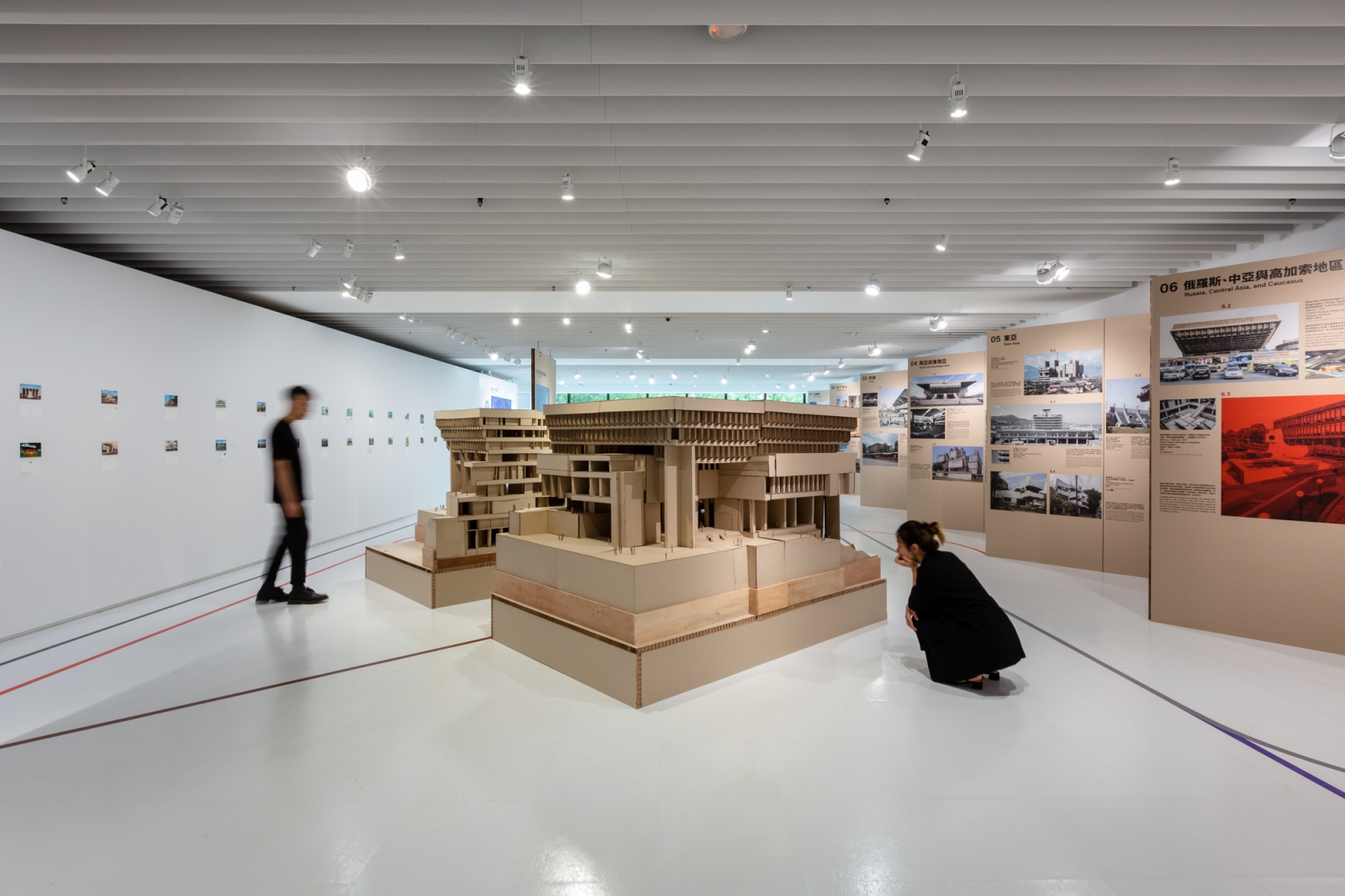

The topic departs along five trajectories. These include interpretation and utilization of concrete by Le Corbusier, the father of modernist architecture, Le Corbusier’ s La Tourette which served as a source of inspiration for Brutalism around the world; as well as the core issue of this exhibition, the #SOSBrutalism Campaigns with its initiatives for architectural rescue. In addition, there are themes exploring various aspects and perspectives, such as Ms. Brutalist, Concrete Churches, and Concrete. For the Taipei exhibition, different color-coded paths will be used to guide the audience in exploring connections between different case-studies.
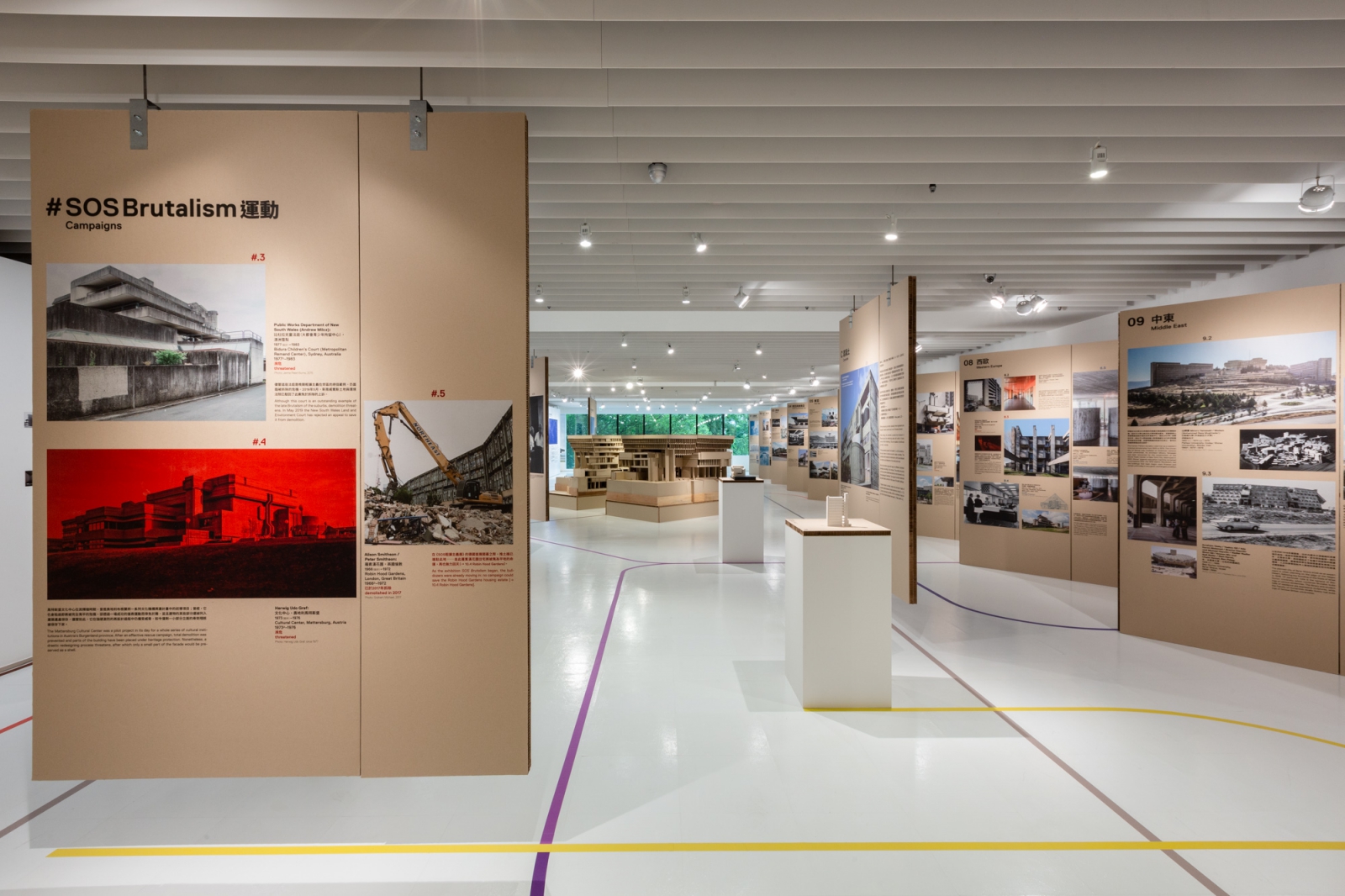
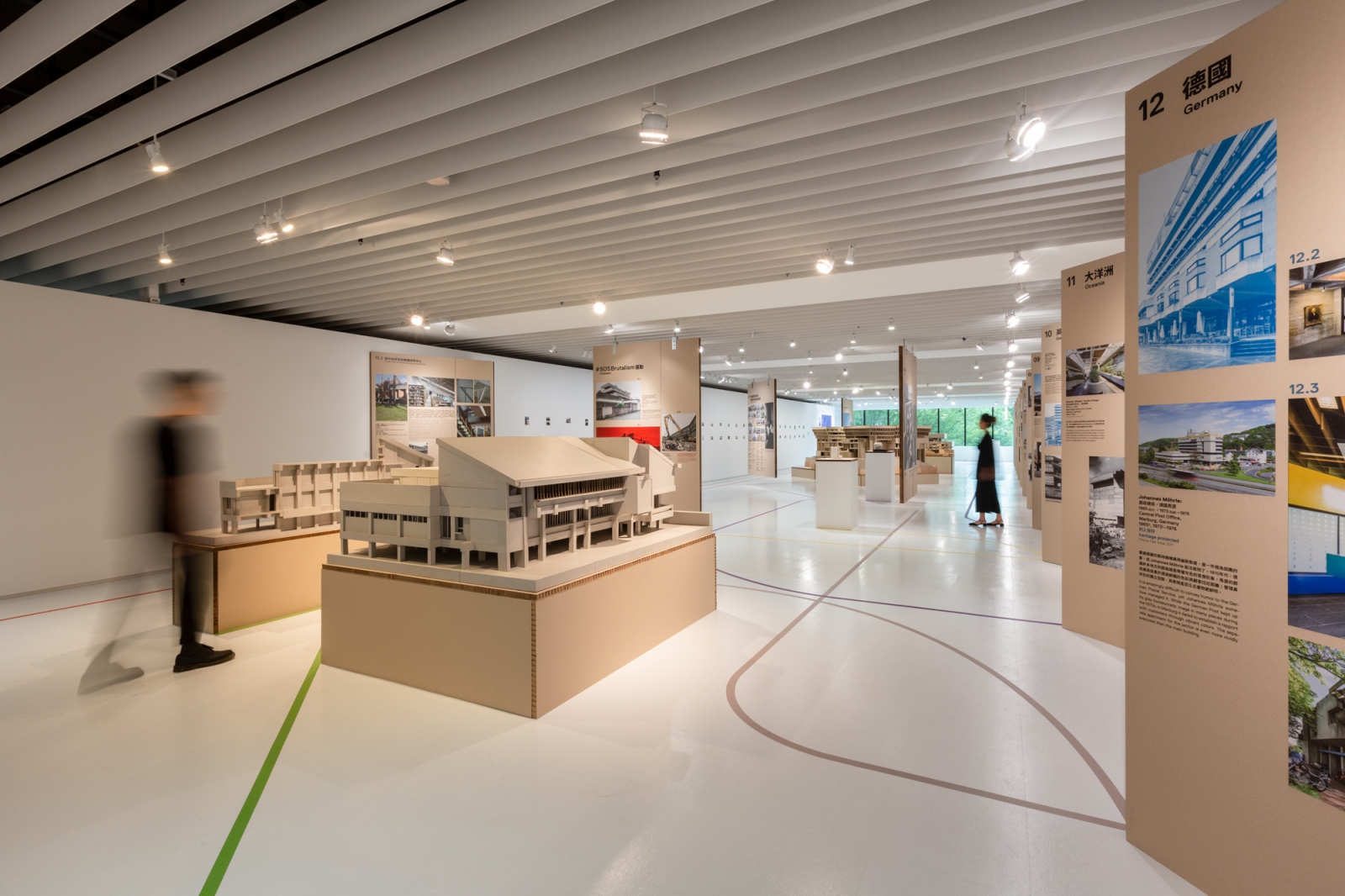
Local architectural case-studies included in the Taipei Exhibition explore the relationship between architecture, human beings, and the times
For the Asian premiere, Jut Art Museum has added six case-studies of Taiwanese examples of Brutalist Architecture to deepen the local perspective and narrative. These include the Wave Tower at San Sin High School of Commerce and Home Economics designed in 1960s by architect Jen-Ho Chen which will be presented in two models in 1:20 and 1:50 scales to highlight the overall structure and design details of the wave structure. Other case-studies include: the Sacred Heart High School for Girls, the former Center for American Studies at Academia Sinica, the Taipei Medical University the St. Joseph Kung-Tung Technical High School, and the Kaohsiung Cultural Center.
The research resulting from the Taiwan case-studies not only reveal Taiwan’s links to the world, but also reflect a true portrait of post-War Taiwanese society. The main visual image selected by exhibition is a historical photo excavated from a San Sin High School of Commerce and Home Economics year book. This photo documents the Wave Tower soon after its completion, with the faculty and students who used this building. The image is a symbolic embodiment of its era, and is a concrete expression of the inseverable relationship between humanity, society, and the times, while also responding to the exhibit’s focus on the relationship between human beings and architecture, rather than a focus on architecture itself.
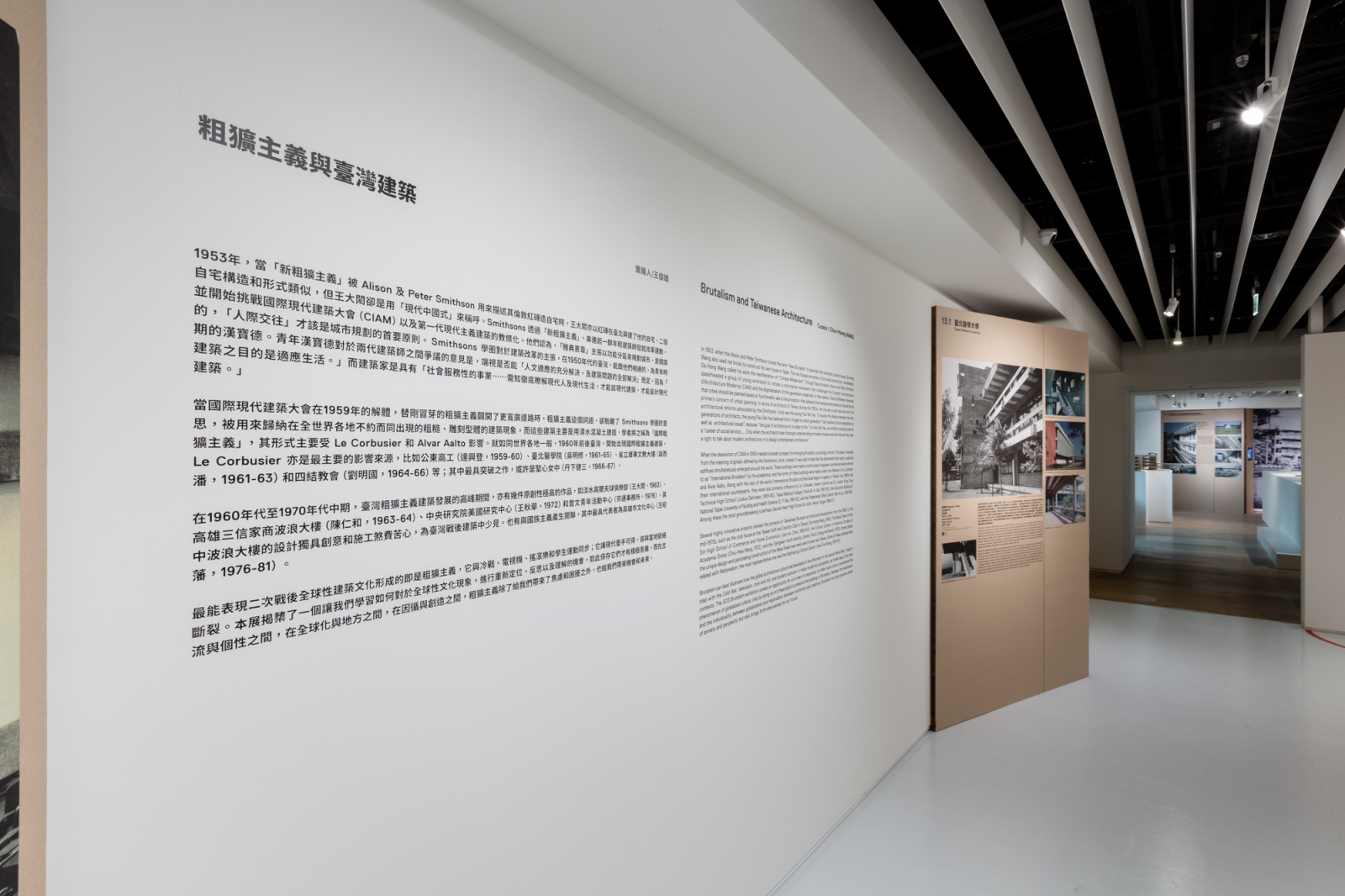
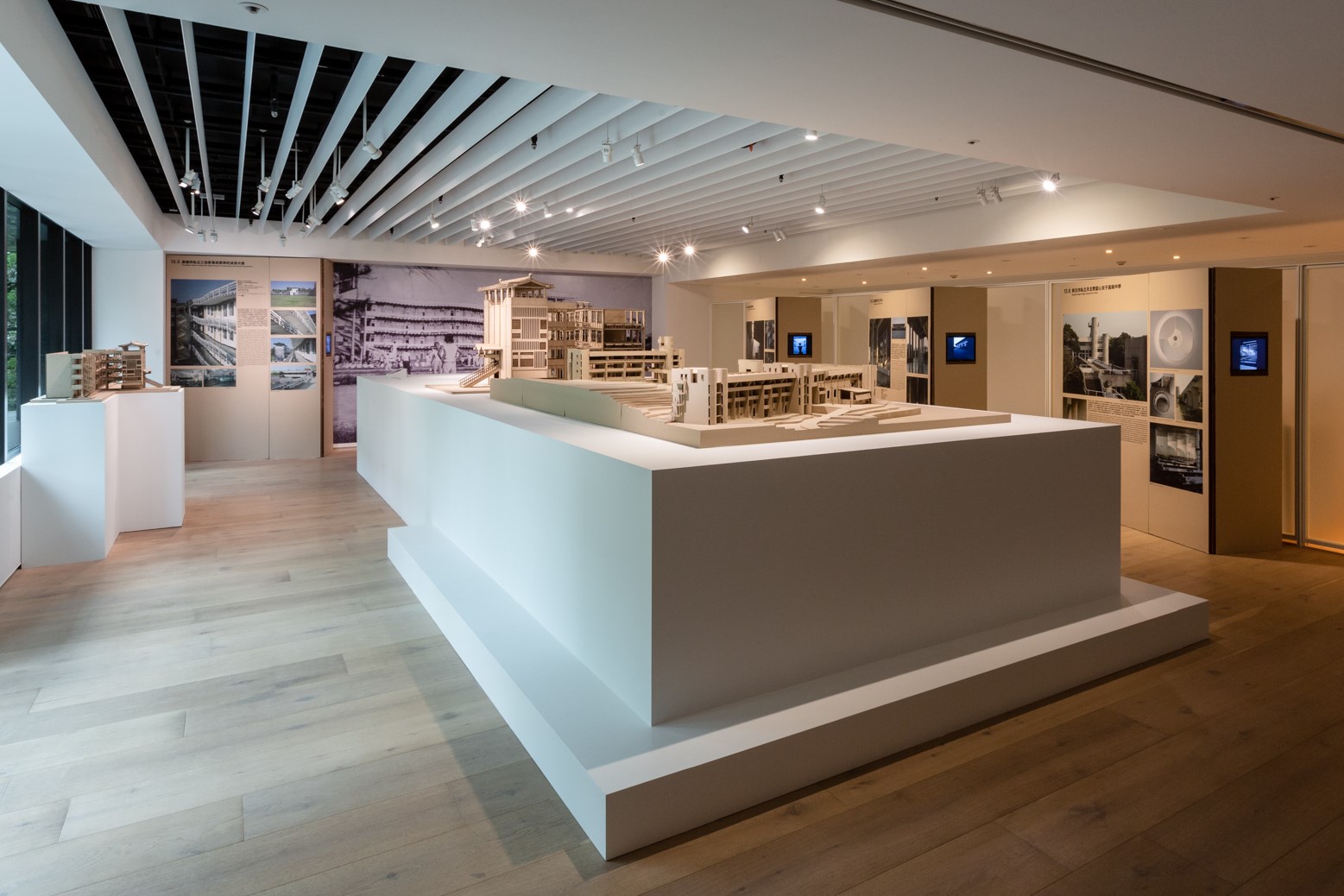
“The SOS Brutalism exhibition unveils an opportunity for us to learn to reposition, to reflect upon, and to comprehend the phenomenon of globalized culture; only by doing so is it meaningful to preserve the buildings of Brutalism. Brutalism not only conjures a sense of anxiety and perplexity but also brings forth alternatives for our future.” says Taiwanese curator Chun-Hsiung Wang.
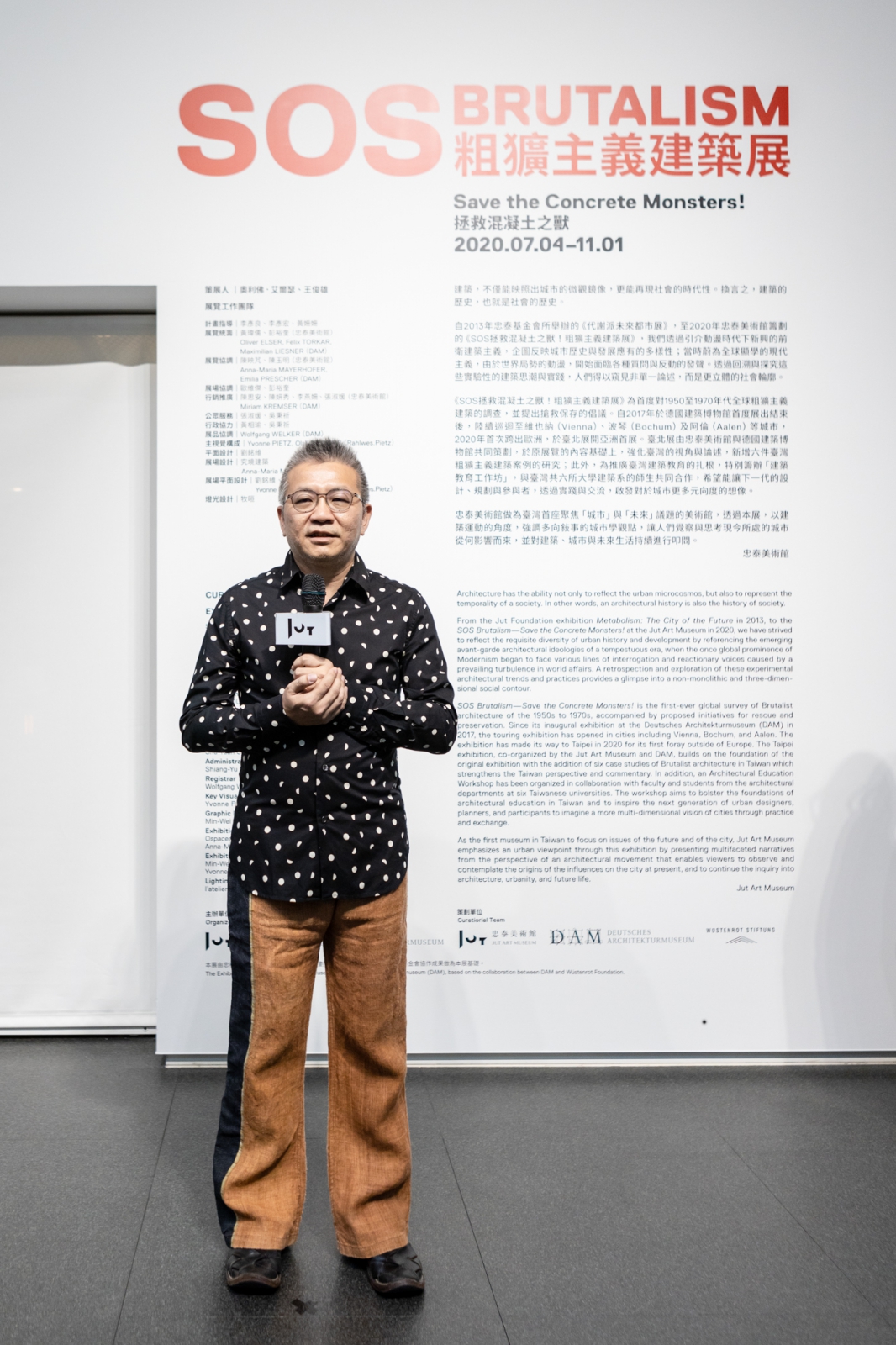
Jut Art Museum opens up a platform for transnational, cross-institutional, and inter-collegiate collaboration to diversify the promotion of architectural educatio
The SOS Brutalism—Save the Concrete Monsters! exhibition has been co-organized by the Jut Art Museum and DAM, based on the collaboration between the DAM and the Wüstenrot Foundation. Additionally, the National Taiwan Museum has provided invaluable historical data on the Taiwan case-studies for this exhibition, opening new avenues for the academic exchange of cross-institutional resources. Director Jens Roesler of the Goethe-Institut Taipei has also attended the press conference in support of the exhibition.
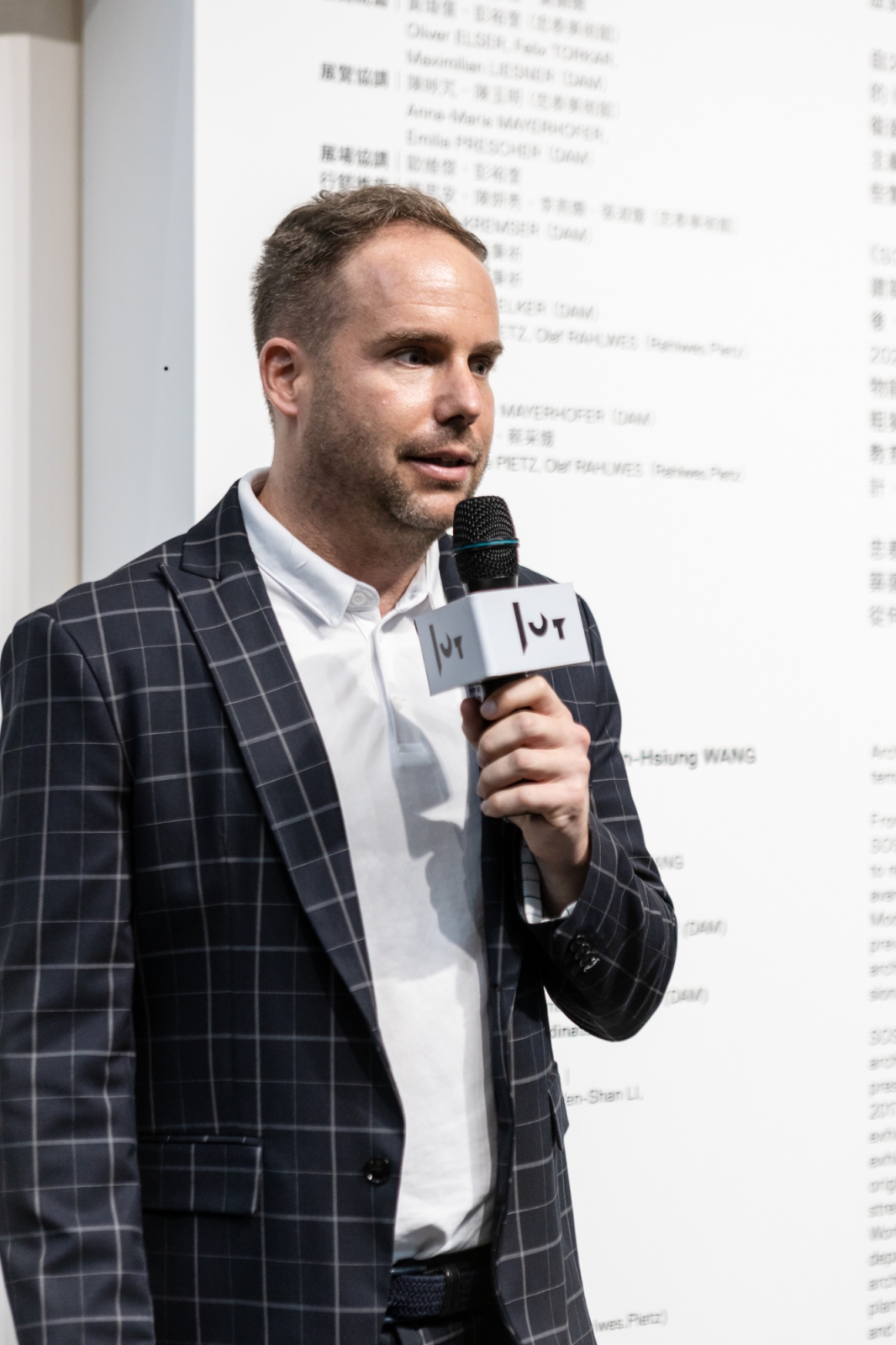
In an effort to firmly establish the promotion of architectural education in Taiwan, the Jut Art Museum has been organizing the “Architectural Education Workshop” series since 2019, launching an on-going inter-collegiate collaboration between some 70 students and faculty members from the departments of architecture at six universities, including Chung Yuan Christian University, China University of Technology, Tamkang University, Shih Chien University, Ming Chuan University, and National Taipei University of Technology. The addition of six case-studies in Taiwanese Brutalist architecture with respective relevant research and narratives, not only further completes the content of the global panorama, but also constructs a platform for increased intergenerational exchange through practice and discussion, while continuing to accumulate a knowledge resource for contemplating future designs and urban construction planning.

Exhibition Goodies
To incentivize members of the public and students to further explore the relationship between architecture and life, a number of visitors’ discounts and promotions will be offered for the exhibition, including “Student Day on Wednesdays" where the price of admission is waived on presentation of a student ID; and, in cooperation with eslite Bookstore, buy-one-get-one-free on admissions every Wednesday for eslite members. In a crossover collaboration, the current exhibition will extend to the MOT CAFÉ, where a limited offering of the “Black Sesame and Kumquat Cake” developed by the café will be available during the exhibition period. In addition, the Jut Art Museum is working with the Cosmos Hotels and Resorts group to offer free admissions on the day with presentation of the room key to guests at any of the four Cosmos properties in the greater Taipei Area, including the Hua Shan Din by Cosmos Creation. For more information on the ticket benefits, please visit the Jut Museum official website.
【Information】
SOS Brutalism—Save the Concrete Monsters!
Venue: Jut Art Museum (No.178, Sec. 3, Civic Blvd., Da'an Dist., Taipei City 106, Taiwan)
Date: 4th July, 2020 – 1st November, 2020
Opening Hours: TUE-SUN 10:00-18:00 (Closed on Mondays)
Admission: General TWD 100, Concessions TWD 80 (student, seniors aged 65 and above, and groups of 10 or more).
Free Admission for the disabled and a companion, children aged 12 and under (Concessions or Free Admission upon presentation of valid proof).
Student Day on WED: one-time Free Admission on Wednesdays upon presentation of valid student ID
Website: https://jam.jutfoundation.org.tw/en/exhibition/107/2261
Organizers: Jut Art Museum, Deutsches Architekturmuseum
Curatorial Team: Jut Art Museum, Deutsches Architekturmuseum, Wüstenrot Foundation
Co-organizers: National Taiwan Museum, Department of Architecture of Chung Yuan University, Department of Architecture of China University of Technology, Department of Architecture of Tamkang University, Department of Architecture of Shih Chien University, Department of Architecture of Ming Chuan University, Department of Architecture of National Taipei University of Technology, Alliance for Architecture Modernity
Cultural Partners: Goethe-Institut Taipei, eslite forum, eslite member
Event Partner: MOT CAFÉ
Official Hotel Partner: Hua Shan Din by Cosmos Creation
The attached is the press release of the exhibition SOS Brutalism—Save the Concrete Monsters!
The press kits and more photos can be downloaded in the link: https://reurl.cc/oLEL8q
